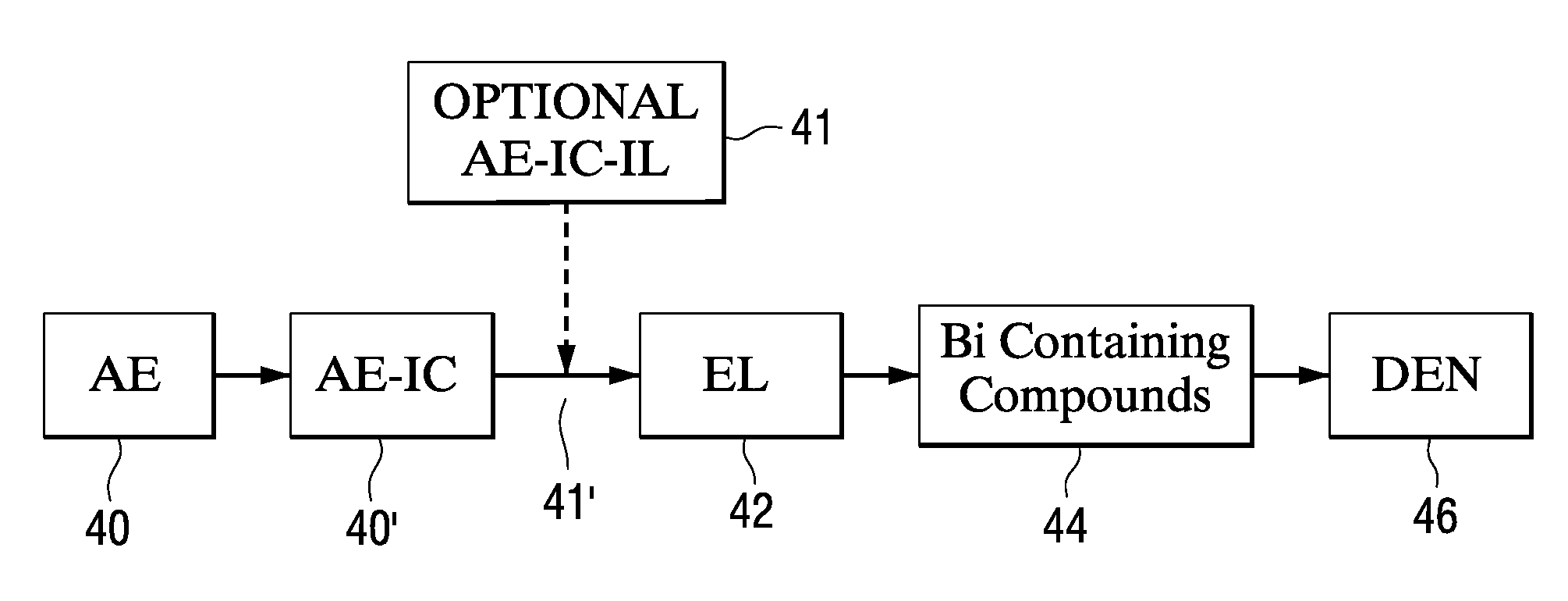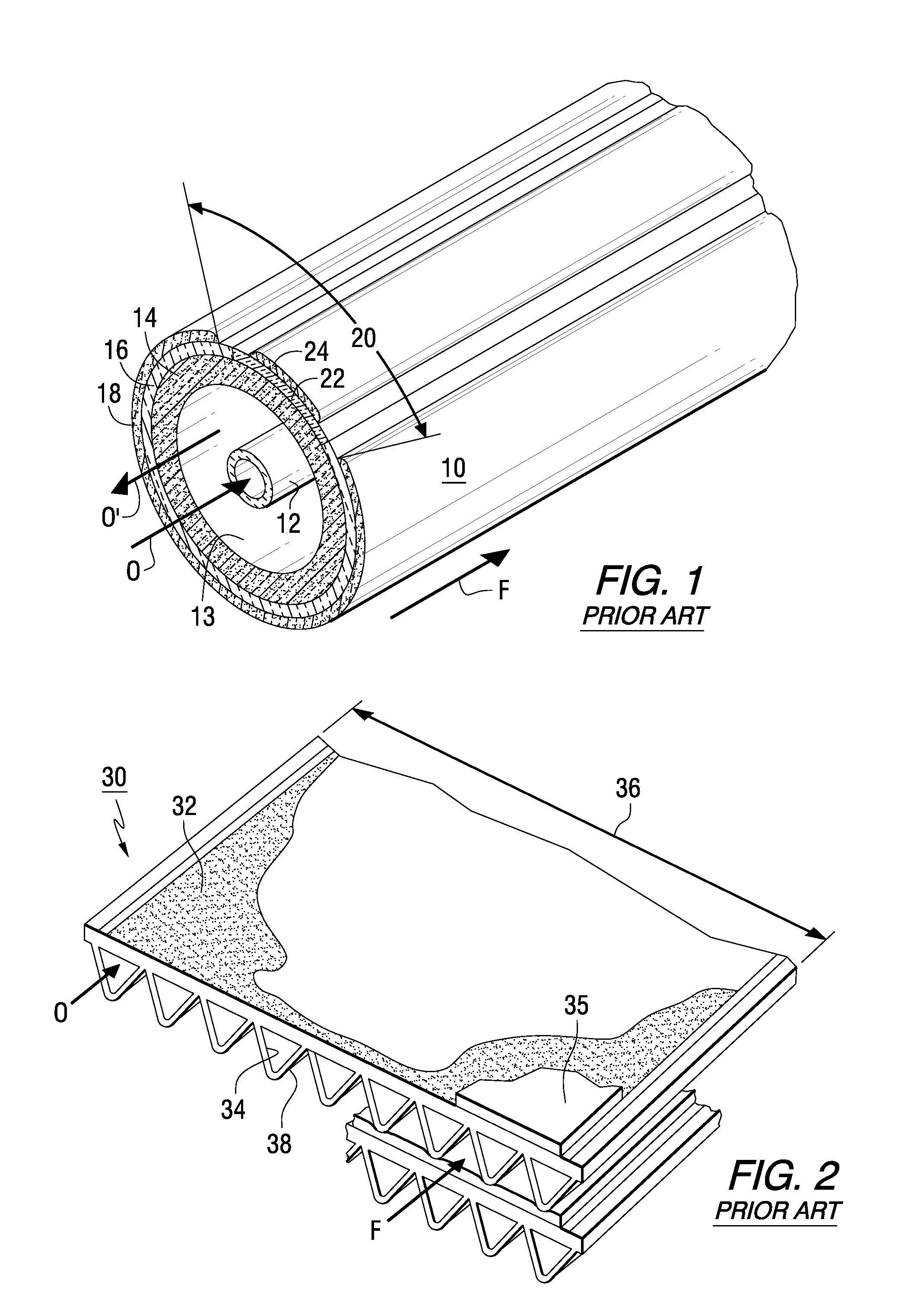Bi Containing Solid Oxide Fuel Cell System With Improved Performance and Reduced Manufacturing Costs
a solid oxide fuel cell and performance technology, applied in the field of bi containing solid oxide fuel cell system with improved performance and reduced manufacturing costs, can solve the problems of reducing the oxygen partial pressure range of ionic conduction, affecting the performance of cells, and affecting the efficiency of sofcs for power generation, so as to reduce the cost of expensive electrolyte powder, reduce temperature, and eliminate electrolyte microcracks
- Summary
- Abstract
- Description
- Claims
- Application Information
AI Technical Summary
Benefits of technology
Problems solved by technology
Method used
Image
Examples
examples
[0044]Test Cell A having a modified lanthanum manganite air electrode was plasma sprayed with scandia stabilized zirconia (ScSZ) to provide a “green” porous electrolyte coating. The electrolyte coating was then infiltrated / impregnated with aqueous Bi2O3 suspension at room temperature for about two minutes. Then the whole structure was heated to 1,050° C. for six hours to densify the electrolyte and IC. Cells B and C, the same as Cell A, were not infiltrated / impregnated with Bi2O3. FIGS. 5A-B show test results of Cells A, B and C with current density (mA / cm2) vs. cell voltage (V) at 900° C. and 700° C. Clearly, Cell (Test) A shows that Bi2O3 inclusion in the electrolyte helps cell performance vs. Cells (Tests) B and C with no Bi2O3. The improvement is more than 30 mV at 900° C. and 200 mA / cm2 and increases as temperature goes down. At 700° C. and 100 mA / cm2, for example, cell voltages improved 140 mV. The improvement is mainly attributed to the kinetic enhancement at the electrolyte ...
PUM
| Property | Measurement | Unit |
|---|---|---|
| thickness | aaaaa | aaaaa |
| temperatures | aaaaa | aaaaa |
| thick | aaaaa | aaaaa |
Abstract
Description
Claims
Application Information
 Login to View More
Login to View More - R&D
- Intellectual Property
- Life Sciences
- Materials
- Tech Scout
- Unparalleled Data Quality
- Higher Quality Content
- 60% Fewer Hallucinations
Browse by: Latest US Patents, China's latest patents, Technical Efficacy Thesaurus, Application Domain, Technology Topic, Popular Technical Reports.
© 2025 PatSnap. All rights reserved.Legal|Privacy policy|Modern Slavery Act Transparency Statement|Sitemap|About US| Contact US: help@patsnap.com



